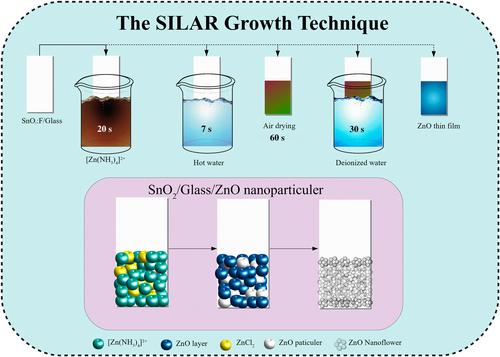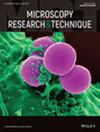Analyzing antimicrobial activity of ZnO/FTO, Sn–Cu-doped ZnO/FTO thin films: Production and characterizations
Abstract
In the developing field of nanotechnology, ZnO (zinc oxide) based semiconductor samples have emerged as the foremost choice due to their immense potential for advancing the development of cutting-edge nanodevices. Due to its excellent chemical stability, low cost, and non-toxicity to biological systems, it is also utilized in various investigations. In this study, the successive ionic layer adsorption and reaction (SILAR) method was used to generate FTO (fluorine-doped tin oxide)/ZnO, and tin (Sn)–copper (Cu)-doped ZnO thin films at varying concentrations on FTO substrates. After being stacked 40 times in varying concentrations on the FTO substrate, FTO/ZnO thin films and Sn–Cu-doped thin films were annealed at 300°C. Using Scanning Electron Microscopy (SEM) Energy Dispersive Spectroscopy-(EDS), the agar diffusion test, and the viability cell counting method, the minimum inhibitory concentration, structural properties, surface morphology, antibacterial properties, bacterial adhesion, and survival organism count of FTO/ZnO thin films and Sn–Cu-doped thin films were investigated. Both doped and FTO/ZnO films with varying Sn–Cu concentrations expanded harmonically on the FTO substrate, according to the SEM-EDS investigation. The doping concentration affected their morphological properties, causing changes depending on the doping level. Antibacterial activity was observed in the powder metals, but no antibacterial activity was found in the thin film form. The highest adhesion rate of bacterial organisms on the produced samples was observed when the FTO/ZnO/Sn–Cu doping rate was 1%. In addition, the lowest adhesion rate was observed when the FTO/ZnO/Sn–Cu additive ratio was 3%.
Research Highlights
- ZnO based semiconductors highlight significant potential in advancing nanodevice technology due to their chemical stability, cost-effectiveness, and biocompatibility.
- Employing the SILAR method, the study innovatively fabricates FTO/ZnO and Sn–Cu-doped ZnO thin films on FTO substrates, exploring a novel approach in semiconductor manufacturing.
- Post annealing at 300°C, the research examines the structural and surface morphological changes in the films, contributing to the understanding of semiconductor behavior under varying conditions.
- The study delves into the antibacterial properties of ZnO thin films, offering insights into the potential biomedical applications of these materials.
- SEM-EDS analysis reveals that doping concentrations crucially influence the morphological properties of ZnO thin films, shedding light on the optimization of semiconductor performance.
- Findings indicate a specific doping rate (1% Sn–Cu) enhances bacterial adhesion, while a 3% additive ratio minimizes it, suggesting implications for biomedical device engineering and antibacterial surface design.


 求助内容:
求助内容: 应助结果提醒方式:
应助结果提醒方式:


